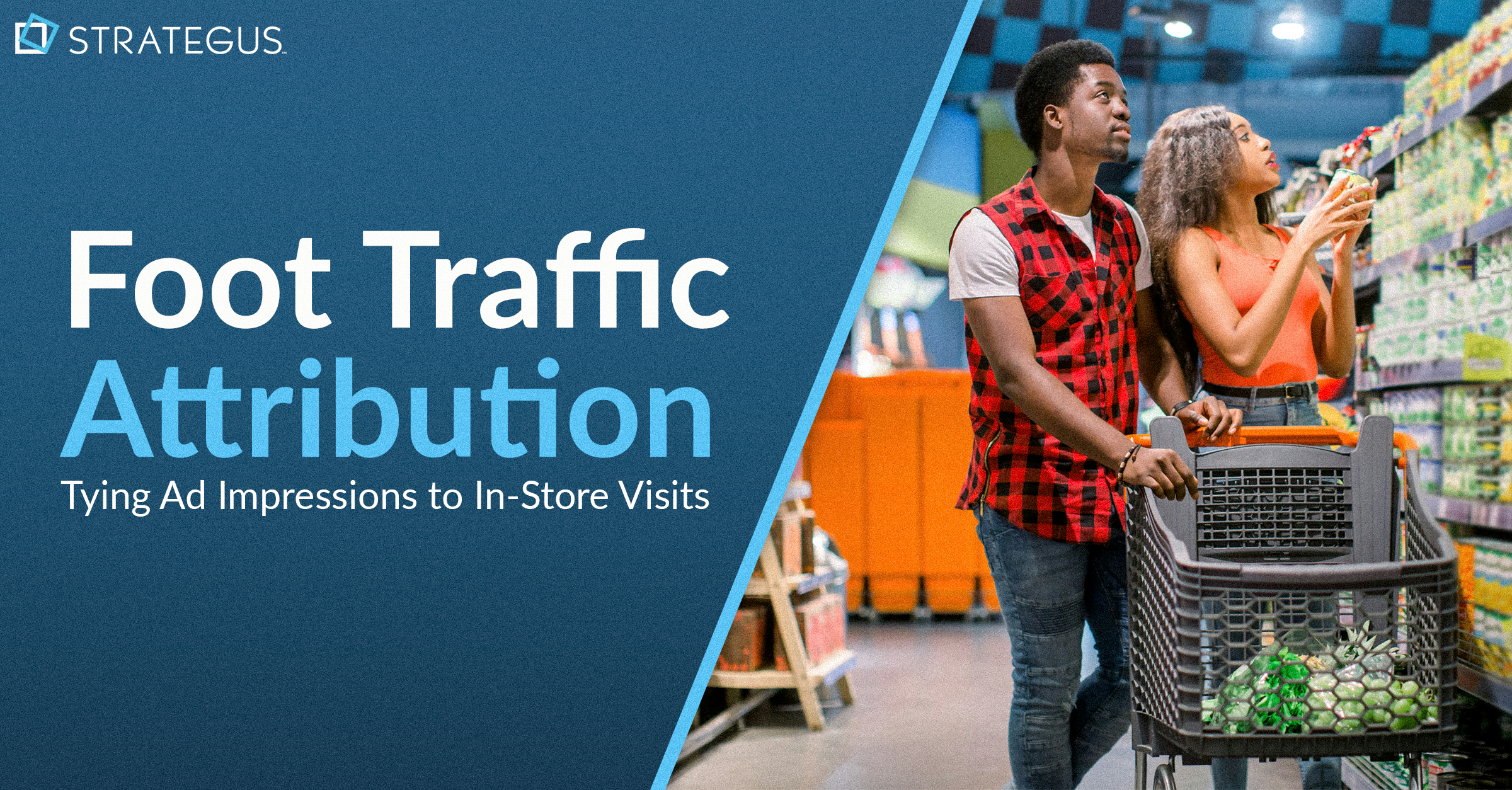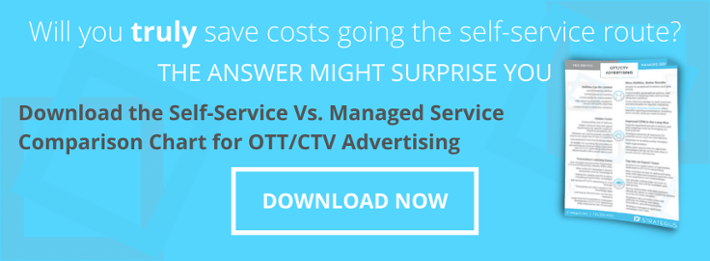- Home
- Strategus Blog
- How Fast Food Advertising Has Evolved Into the OTT/CTV Space
How Fast Food Advertising Has Evolved Into the OTT/CTV Space
 Andy Dixon
Andy Dixon
4 minutes read

The past year has introduced many changes to the quick-service restaurant (QSR) industry, especially since the pandemic fast-tracked mobile and online ordering, contactless delivery, and curbside pickup.
As more people prioritize these options, it becomes even more essential that fast food advertising evolves into a space that is efficient at reaching and resonating with the right consumers in the area.
Enter OTT/CTV advertising.
When looking to drive foot traffic and improve sales, there's no better place to start than OTT/CTV, where you can target specific consumers who would be more engaged and take advantage of your offers. In fact, Media Post reports that at least 82% of heavy QSR customers are OTT viewers (more than 132 million people!), and 70% of those OTT viewers have visited a QSR restaurant six or more times in the last 30 days.
THE COVID EFFECT ON THE QSR INDUSTRY
The pandemic hit many industries hard, but few had to switch gears quite as much as QSRs. One minute all the attention is on indoor dining and providing the best experiences for your customers, and the next, the entire world is shut down, and QSRs are forced to adapt quickly or lose everything.
This meant making valuable changes during and proceeding with the pandemic, including:
- Contactless delivery
- Contactless/curbside takeout
- Drive-thru efficiency
- Online ordering
- Mobile/app ordering
According to the National Restaurant Association, at least 7 in 10 QSRs said off-premise sales represent a higher proportion of their total business compared to pre-COVID levels. Their report also found that 67% added curbside pickup, 27% added third-party delivery, and 17% introduced in-house delivery since the beginning of the pandemic.
Additionally, most plan to continue these offerings even after the pandemic increases the opportunity for OTT/CTV advertising to target those consumers where they are consuming media.
According to eMarketer, the number of time adults will spend watching traditional cable TV will decrease by 7% this year, while the time spent watching OTT/CTV will increase from 133 minutes in 2020 to 145 minutes by 2022.
This will give fast-food restaurants a unique opportunity to target a large portion of their specific audience on a platform they're already active on. Moreover, viewers opt-in to see more ads in SVOD in exchange for paying less monthly, making them more open and engaged to see your advertising.
HOW QSRS CAN IMPLEMENT OTT/CTV CAMPAIGNS
The sooner you implement OTT/CTV campaigns into your marketing mix, the better. Although OTT advertising is quickly gaining traction among all businesses and industries, there is still time to get ahead of the curb and in front of your competition.
Since one of the main goals of QSRs is to increase foot traffic and ultimately increase sales (more deliveries can be a byproduct of that), the best way to accomplish this for QSRs is through a multi-screen approach. First, target consumers in a regional DMA via a CTV advertisement, then retarget them using pre-roll video and display advertising.
This multi-screen approach puts your brand in multiple places and gives you the ability to track results/attribution to measure impact. The desired result? Increase in-store/takeout visits by those who viewed the ad!
Let’s see it in action:
A regional take-out franchise is struggling with traditional TV ads. They can’t measure the impact of their ad spend and ROI, so there is no insight into how well their ads were performing — let alone whether they influence viewers to visit their locations.
The solution: CTV ads.
To increase foot traffic (and thus sales), this franchise decided to implement CTV ads within the DMA, accompanied by display retargeting ads to reinforce the message for users who had viewed the CTV ads. In addition, the franchise can now identify how many viewers visited a restaurant location after viewing an ad using foot-traffic attribution.
NAVIGATE THE OTT/CTV SPACE WITH STRATEGUS
The potential of OTT/CTV advertising is growing by the day. Although there isn't an industry today that wouldn't benefit from OTT, the quick-service restaurant industry stands among the biggest beneficiaries. Many significant changes have impacted fast-food restaurants, and it will take unique and targeted campaigns to ensure that you make it through these shifts.
To ensure that you're making the most of your OTT/CTV strategy and reaching the right audience with your brand message, develop your next campaign with Strategus. Our Strategus team has exceptional experience navigating OTT/CTV and optimizing campaigns and strategies to meet each client's specific goals.
Contact us for more insights and resources on what our team can do for you and your fast food advertising, or download this case study to see the results for yourself!

Andy Dixon is a seasoned Content Writing Specialist at Strategus, renowned for his expertise in creating engaging and impactful digital content. With over a decade of experience in content creation, Andy has honed his skills in a variety of niches, ranging from technology and marketing to education.
Strategus is a managed services connected TV(CTV) advertising agency with over 60,000+ campaigns delivered. Find out how our experts can extend your team and drive the result that matter most.
Talk to an Expert
Seeking a Custom CTV Strategy That Delivers?
What to read next

Third-Party Data Targeting for CTV: Benefits & Tactics
Third-party data. It’s a term that’s thrown around, and yet few take the time to detail its pros and cons — much less strategies for using...
7 minutes read

First-Party Data Targeting: Benefits and Tactics for CTV Advertising
First-party data is the information that companies collect directly from their customers rather than through intermediaries. Advertisers use this...
10 minutes read

Foot-Traffic Attribution: Tying Ad Impressions to In-Store Visits
The marketing funnel has changed. Today’s shoppers often begin researching products from the comfort of their homes and don’t set foot into a store...
8 minutes read

CTV Attribution: What It Is and How It Works
Connected TV (CTV) viewing is on the rise — and that’s good news for marketers. Not only can CTV ads be precisely targeted to individual households,...
9 minutes read


















